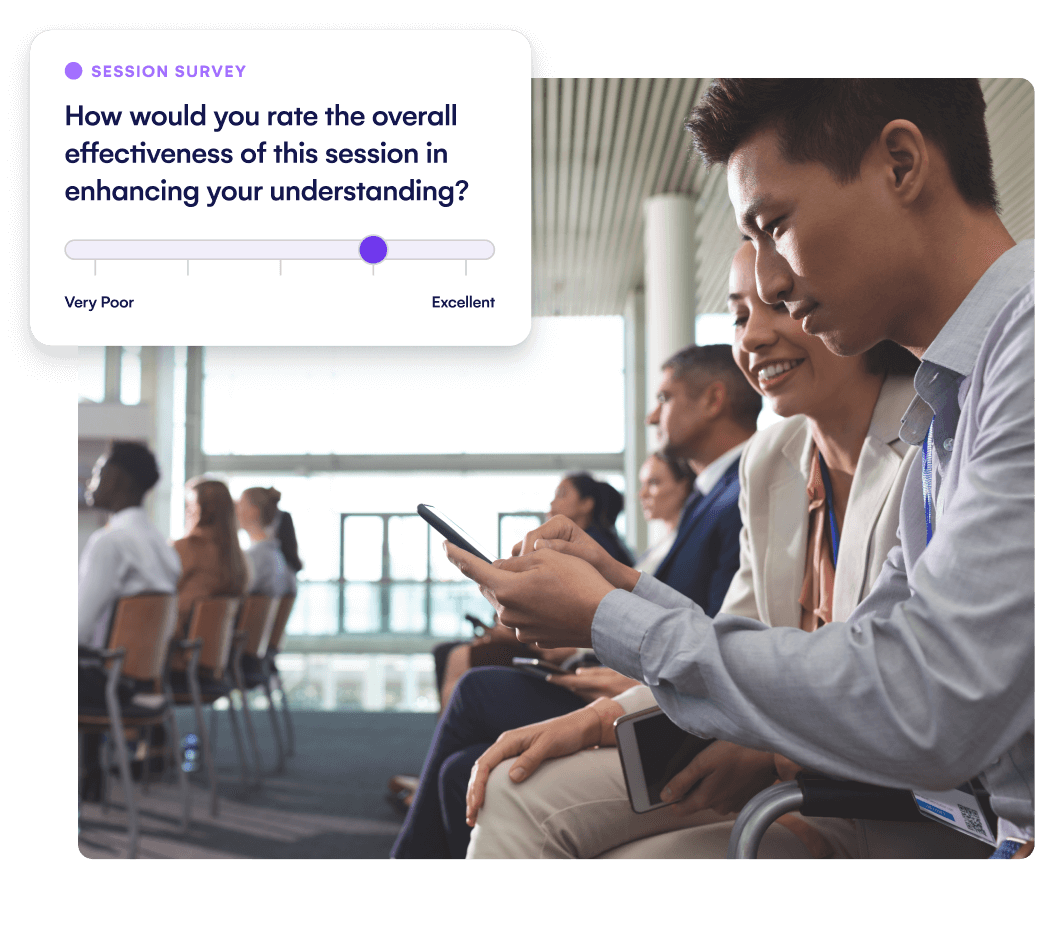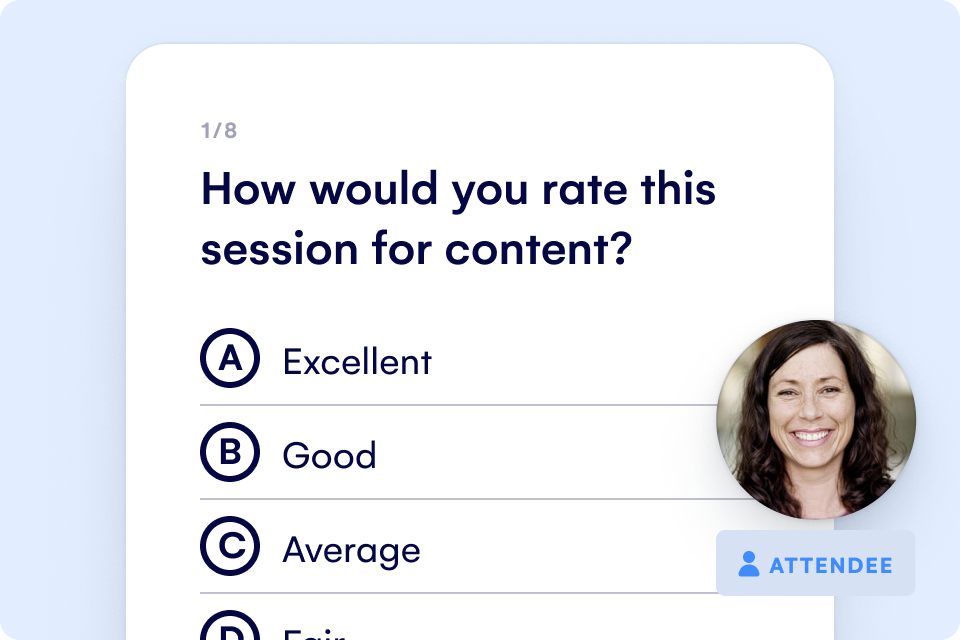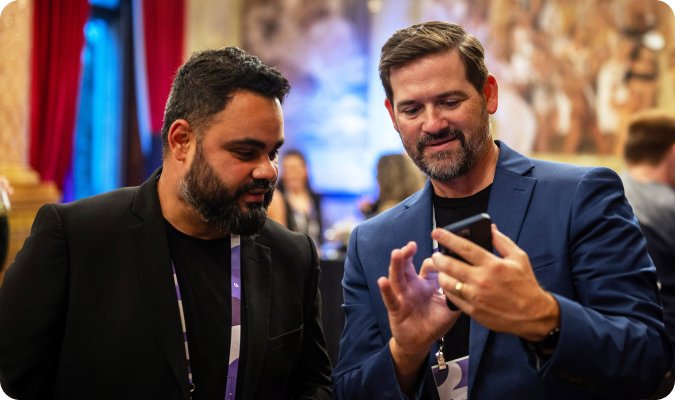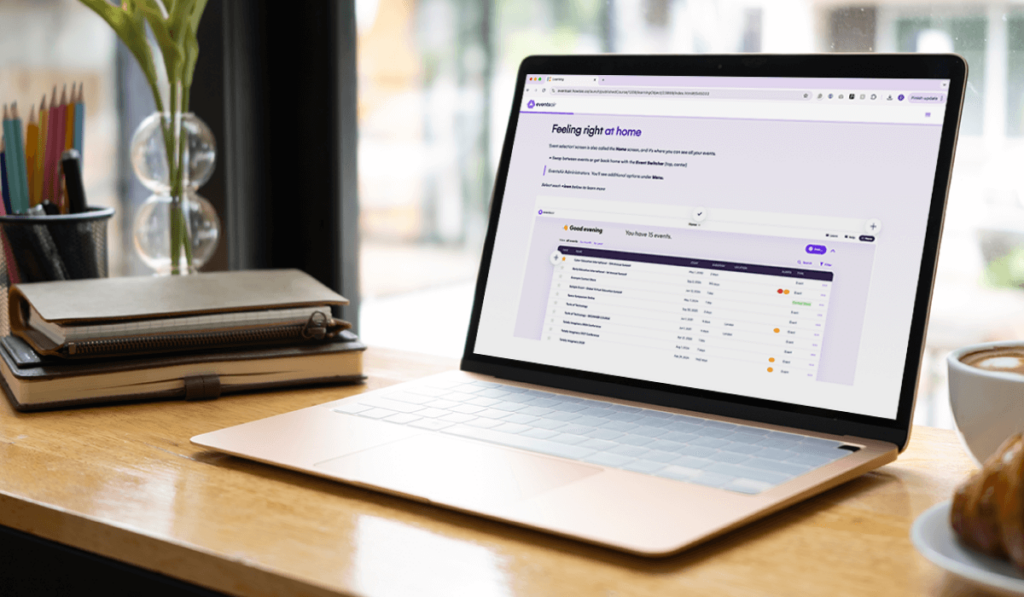
A well-executed panel discussion is one of the most powerful ways to engage an audience, spark meaningful conversations, and provide valuable insights. Whether you’re organizing a large event, industry conference, or virtual webinar, a panel discussion brings together experts to exchange ideas, share experiences, and offer diverse perspectives on a topic.
However, a panel can easily fall flat if you don’t plan and moderate it effectively. Common pitfalls like unbalanced participation, lack of audience engagement, or meandering discussions can diminish the impact of your event. The key to success lies in thoughtful preparation, dynamic moderation, and strategic audience involvement.
In this EventsAir guide, we’ll walk you through everything you need to know to host a compelling and well-structured panel discussion. From selecting the right panelists to crafting engaging questions and facilitating meaningful interactions, these best practices will ensure your panel is a standout success.
What is a panel discussion?
A panel discussion is a lively conversation where a group of experts, thought leaders, or industry pros come together to share insights on a specific topic in front of an audience. Unlike a keynote or lecture, panel discussions are all about interaction – between the panelists themselves and with the audience.
Usually, a panel has a moderator and a small group of panelists, typically three to five people. The moderator keeps things running smoothly by asking meaningful questions, making sure everyone gets a chance to speak, and steering the conversation in the right direction. The panelists, chosen for their expertise, bring different perspectives, experiences, and ideas to the table, making the discussion engaging and dynamic.
You’ll find panel discussions in all kinds of settings, from corporate events and academic conferences to media interviews and online webinars. They’re especially effective when a topic needs a mix of viewpoints or deeper exploration, giving the audience a well-rounded understanding of the subject.
What are the benefits of hosting a panel discussion?
A well-executed panel discussion creates high-value conversations and deepens audience engagement. It’s an effective way to showcase expertise, encourage debate, and provide fresh insights on industry topics.
Here’s why panel discussions matter:
- Brings in fresh perspectives: Panels are a great way to gather experts from different fields and backgrounds, giving them a chance to share unique ideas and challenge each other’s views. This back-and-forth creates a lively discussion and helps the audience get a more complete picture of the topic.
- Keeps your audience engaged: Interactive panels with live Q&A, audience polls, and real-time discussions make attendees feel like part of the action, not just spectators. This fun, dynamic setup keeps everyone involved and excited to participate.
- Shows off your expertise: A well-planned panel with knowledgeable speakers highlights both the individuals and their brands as leaders in the field. It’s a great way to build trust and credibility with your audience and peers.
- Encourages networking and collaboration: Panels are perfect for creating meaningful connections between speakers and the audience. They spark conversations, open doors for collaboration, and help grow professional relationships.
- Works wonders for hybrid and virtual events: With today’s digital tools, panels in virtual or hybrid settings are easy to manage. They ensure smooth discussions, keep remote audiences engaged, and even provide valuable insights through participation tracking.
With EventsAir, organizers can manage speaker coordination, enable live audience interaction, and ensure a structured, engaging discussion, making panels more impactful.

Effective methods for hosting a panel discussion
Panel discussions can be structured in different ways depending on the event format, audience engagement level, and panel goals. Here, we’ll share two widely used methods that maximize audience engagement and discussion flow.
Method 1: Traditional panel discussion
A traditional panel discussion follows a structured format with a moderator guiding the conversation, panelists responding to key topics, and audience Q&A toward the end. This format works best for formal conferences, industry summits, and executive roundtables, where a well-defined discussion flow is essential.
1. Select & prepare your panelists
The success of a panel depends on choosing the right speakers who bring expertise, diverse viewpoints, and engaging personalities.
When selecting your panelists, you should consider:
- Diverse expertise and backgrounds. Ensure panelists bring different perspectives to avoid repetitive answers.
- Strong communication skills. Select speakers who can articulate their insights concisely and engage an audience.
- Balanced representation. A mix of industry veterans, emerging voices, and different demographics creates a richer discussion.
Once you’ve chosen your panelists, it’s time to help them feel ready to shine. Share the discussion topics and key talking points ahead of time so they can come prepared. Send over a detailed run-of-show that breaks down the timing and flow of each section. For hybrid or virtual panels, don’t forget to do a quick tech check and rehearsal to make sure everything goes off without a hitch on the big day.
2. Define key discussion topics
Panels work best when they stick to a few core themes instead of trying to cover too many topics. This keeps the discussion more focused and engaging, makes it easier for the audience to follow, and gives panelists the chance to share meaningful insights without just skimming the surface.
You can define strong discussion topics by:
- Addressing industry trends & challenges. Choose themes that spark debate and fresh insights.
- Balancing broad themes with targeted questions. Structure the discussion so panelists can offer in-depth perspectives.
- Adapting to audience interests. Use pre-event surveys or live polling to shape key topics.
With EventsAir, organizers can track audience conversation, manage panel discussion flows, and adjust topics dynamically based on engagement data.

3. Set a time-limited format
Unstructured panels often run over time, lose focus, or allow dominant voices to overshadow others. A strict time structure keeps the discussion balanced.
Here’s a time breakdown you can use:
- 5 minutes – Moderator introduces panelists & discussion theme.
- 30 minutes – Structured discussion, with each panelist responding to moderator-guided questions.
- 15 minutes – Audience Q&A.
- 5 minutes – Closing remarks & final insights.
But, if you’re looking for a snappy, short version, we recommend cutting all the above times in half and limiting your structured discussion to three main topics at most.
4. Engage the audience with Q&A
Audience Q&A elevates a panel from passive to interactive, but poorly managed Q&A can lead to off-topic questions or audience disengagement.
To make sure your Q&A sessions are effective you can:
- Filter and curate questions. Use event platforms to collect live audience questions and prioritize high-value inquiries.
- Use upvoting systems. Platforms like EventsAir allow attendees to upvote the most relevant questions in real time.
- Balance Q&A timing. Don’t wait until the end – insert Q&A moments throughout the discussion for better engagement.
5. Ensure the moderator guides the flow
Effective moderation is all about balancing time, engagement, and flexibility. As a moderator, it’s important to keep panelists on schedule and make sure no one speaker hogs the spotlight. Encouraging natural back-and-forth between panelists, rather than sticking to a stiff Q&A format, makes the conversation feel more lively and interesting.
And if someone goes off-topic, a good moderator can gently redirect or reframe the question to keep things focused and valuable for the audience.
6. Close with key takeaways
A panel should end with clear, memorable takeaways rather than just fading out.
Here’s how you can wrap up effectively:
- Ask each panelist for one final key insight or action step.
- Summarize the main discussion points and link them back to audience interests.
- Provide next steps, such as resources or follow-up events.
With EventsAir’s post-event engagement features, organizers can share summary notes, track attendee feedback, and provide access to recorded panel content.

Method 2: Interactive panel with live audience engagement
An interactive panel flips the script from the usual panelist-led discussions to more audience-focused conversations, making the whole experience more engaging and fun for everyone.
This format sparks lively debates among the panelists, lets audience members jump in with their own questions or thoughts, and creates real-time connections between the speakers and the crowd. It’s all about keeping things dynamic and participatory.
1. Invite a moderator who can facilitate engagement
A traditional moderator keeps the discussion on track, but an interactive panel requires a facilitator who can energize the audience.
The moderator you select should be skilled at moving beyond scripted questions, allowing real-time audience insights to shape the discussion organically. They should also encourage lively exchanges by prompting speakers to engage with and respond to each other’s statements, encouraging dynamic mini-debates.
Additionally, a great moderator will be able to gauge audience energy, using tools like live polling to adjust topics based on audience reactions, ensuring an engaging and interactive experience.
2. Use live polling & audience questions
Instead of waiting for Q&A at the end, an interactive panel involves the audience throughout the discussion.
Here’s how you can integrate live polling and Q&A:
- Open with a live poll. Ask attendees about their opinions on the topic to frame the discussion.
- Encourage real-time questions. Use digital tools like EventsAir’s audience engagement tools to submit and upvote questions.
- React to audience responses. Have panelists comment on live poll results, making the discussions more audience-driven and relevant.
3. Rotate panelist speaking order
Unlike structured panels, interactive formats allow panelists to jump into discussions dynamically rather than following a set speaking order.
You can implement free-flowing panel discussions by:
- Allowing panelists to respond naturally instead of waiting for their turn.
- Encouraging back-and-forth exchanges between speakers.
- Using “hot seat” rounds where panelists take turns answering quick-fire audience questions.
This format ensures organic conversations while keeping energy levels high.
4. Incorporate audience breakout sessions
A highly interactive method is to give the audience a voice through short breakout discussions that feed into the panel.
Here’s how it works:
- Attendees break into small groups for 2-3 minutes to generate key discussion points.
- A designated attendee from each group shares their insights with the panel.
- Panelists respond directly to audience-generated points.
This approach ensures attendees actively shape the discussion, leading to higher engagement and deeper insights.
5. Keep the discussion open-ended
Unlike traditional panels, interactive discussions don’t stick to rigid, pre-planned topic changes. Instead, they flow naturally based on audience interest and participation. This flexibility makes it easier to dive deeper into the topics that matter most to attendees, creating a more lively and engaging experience for everyone.
- Let audience participation drive the flow of conversation.
- Encourage natural topic shifts based on the most upvoted audience questions.
- Avoid scripted closing remarks – instead, allow panelists to react to final audience insights.
This format creates a dynamic, immersive experience that leaves attendees feeling involved.
Best practices when hosting a panel discussion
1. Keep introductions short & relevant
Keep introductions short and sweet. The audience just needs to know why each panelist is relevant to the discussion – not their entire career history. Aim for under a minute per panelist, and let the moderator handle the intros instead of having each speaker do it themselves. It keeps things smooth and focused.
2. Encourage discussion, not just individual responses
Panels should feel more like a conversation than a string of mini-presentations. Encourage panelists to jump in, respond to each other’s points, ask follow-up questions, and even challenge different perspectives – not just wait for their turn to talk. It makes the discussion way more lively and fun.
3. Manage speaking time to prevent dominance
When one panelist takes over the conversation, it can really weaken the discussion. Try using a round-robin approach for opening responses to give everyone a chance to speak, then let the conversation flow naturally. If someone starts talking too much, the moderator can gently redirect the discussion to keep things balanced without making it awkward.
4. Structure audience Q&A to avoid rambling
Try using a digital Q&A tool where attendees can submit and upvote the best questions – it’s a great way to keep the discussion relevant and engaging for everyone. If you’re allowing live questions, set some simple guidelines like time limits and asking attendees to keep their questions short and to the point.
5. Always end with clear takeaways
Don’t let the panel just fizzle out. Give each panelist time to share a final thought or key takeaway. The moderator can wrap things up by summarizing the main discussion points and pointing attendees toward next steps or helpful resources.
Host a panel discussion that engages and inspires with EventsAir
A well-structured panel discussion delivers engaging, insightful conversations while keeping both speakers and audiences actively involved. By choosing the right panelists, structuring the flow, managing speaking time, and optimizing audience Q&A, you can create a compelling and interactive session.
With EventsAir, event organizers can streamline panel logistics, manage audience participation, and enhance engagement with real-time Q&A and speaker coordination tools. Whether hosting an in-person, virtual, or hybrid panel, our platform ensures a seamless, well-managed discussion.
Ready to elevate your next panel discussion? Book a demo with EventsAir today!
Attendee Engagement | Event Planning & Management
See EventsAir in action
Discover why 12,000+ event professionals trust EventsAir to deliver effortless events, every time.




